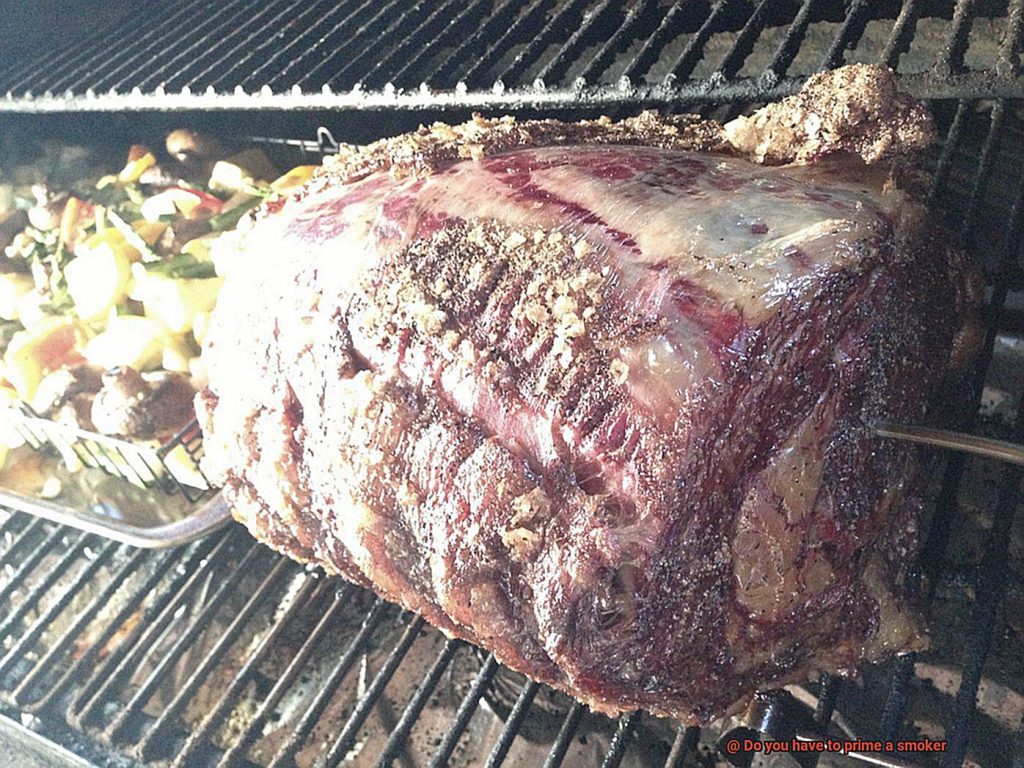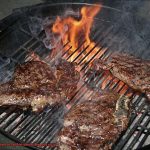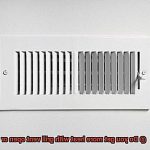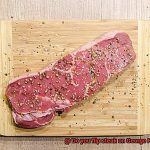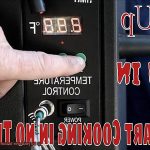Are you ready to impress your friends and family with some lip-smacking BBQ dishes? A smoker is undoubtedly a fantastic tool to create that smoky, delicious flavor in your meat. But before you start smoking, there’s one crucial step that you shouldn’t skip – priming your smoker.
Whether you’re a seasoned pitmaster or a newbie, the question of whether or not to prime a smoker always comes up. The answer is simple – yes, you should prime your smoker before cooking any meat. But why is it so important?
Priming involves preheating your smoker for an extended period before adding any meat. This process helps to cook off any residual oil or rust and eliminate impurities that could affect the taste and texture of your meat. By taking the time to prime your smoker, you ensure that the internal temperature is optimal for producing clean smoke, creating ideal smoking conditions for your meat.
The result? Tender and moist smoked meat that will leave your guests begging for more. So in this blog post, we’ll dive into the importance of priming a smoker, which types of smokers require priming, and some handy hacks to get your smoker ready in no time.
Whether you’re using an electric smoker, charcoal smoker, or pellet grill, we’ve got you covered. So sit back, relax and get ready to perfect your BBQ game with our expert tips on priming a smoker.
Contents
What is Priming a Smoker?
Whether you’re a seasoned pro or a novice pitmaster, it’s important to understand the art of priming a smoker.
Priming a smoker is the process of preheating your smoker before adding any meat. This simple step is essential for ensuring that your food is cooked to perfection and tastes absolutely delicious. Here’s how it works:
Firstly, clean out any ash or debris from the previous use of your smoker. This will help ensure that you start with a clean slate. Next, light a small fire in the smoker and let it burn for about 30 minutes to an hour, depending on the type of smoker you’re using and the desired temperature. Keep an eye on the temperature gauge and adjust the vents as needed to maintain a consistent heat.
The purpose of priming a smoker is to burn off any residual chemicals or debris that may affect the flavor and quality of your food. This is especially important if you’re using a new smoker for the first time, as it helps remove any manufacturing chemicals. If you’re using a charcoal or wood smoker, priming is necessary to get rid of any impurities or debris that may be present in the fuel. However, if you’re using an electric or gas smoker, priming may not be necessary as these types of smokers don’t require fuel to be burned.
By taking the time to prime your smoker correctly, you can enjoy mouth-watering meals every time you cook. Here are some additional tips to keep in mind:
- Always use high-quality wood chips or chunks for smoking.
- Keep an eye on your food while it cooks and adjust the temperature as needed.
- Don’t overcrowd your smoker – make sure there’s enough space for smoke to circulate around each piece of meat.
- Experiment with different types of wood and seasonings to find your perfect flavor profile.
Factors that Affect the Need for Priming a Smoker
Well, before you start salivating, it’s important to prime your smoker first. But did you know that there are several factors that can affect the need for priming a smoker? Let’s explore these factors in detail and why they matter.
Firstly, the type of smoker you have can play a significant role in the priming process. For instance, electric smokers come with a built-in heating element and may not require priming at all. Conversely, charcoal smokers rely on charcoal to create heat, making the priming process more intensive and time-consuming.
Temperature outside is another factor that can impact the need for priming. Smoking in colder temperatures can take longer to heat up your smoker, which means you may need to prime it for a more extended period. Conversely, smoking in warmer temperatures may not require as much time to prime.
Another crucial factor is the amount of time your smoker has been sitting unused. If your smoker has been idle for an extended period, it may require a longer priming process to get it back up to temperature. This is because the internal components of the smoker may have cooled down and need more time to heat up.
Lastly, the type of wood or fuel you’re using can also affect the need for priming. Some types of wood or fuel may require a longer priming process than others to ensure that your smoker reaches the necessary temperature for cooking. For example, hardwood chunks may take longer than charcoal to ignite and create enough heat to prime your smoker.
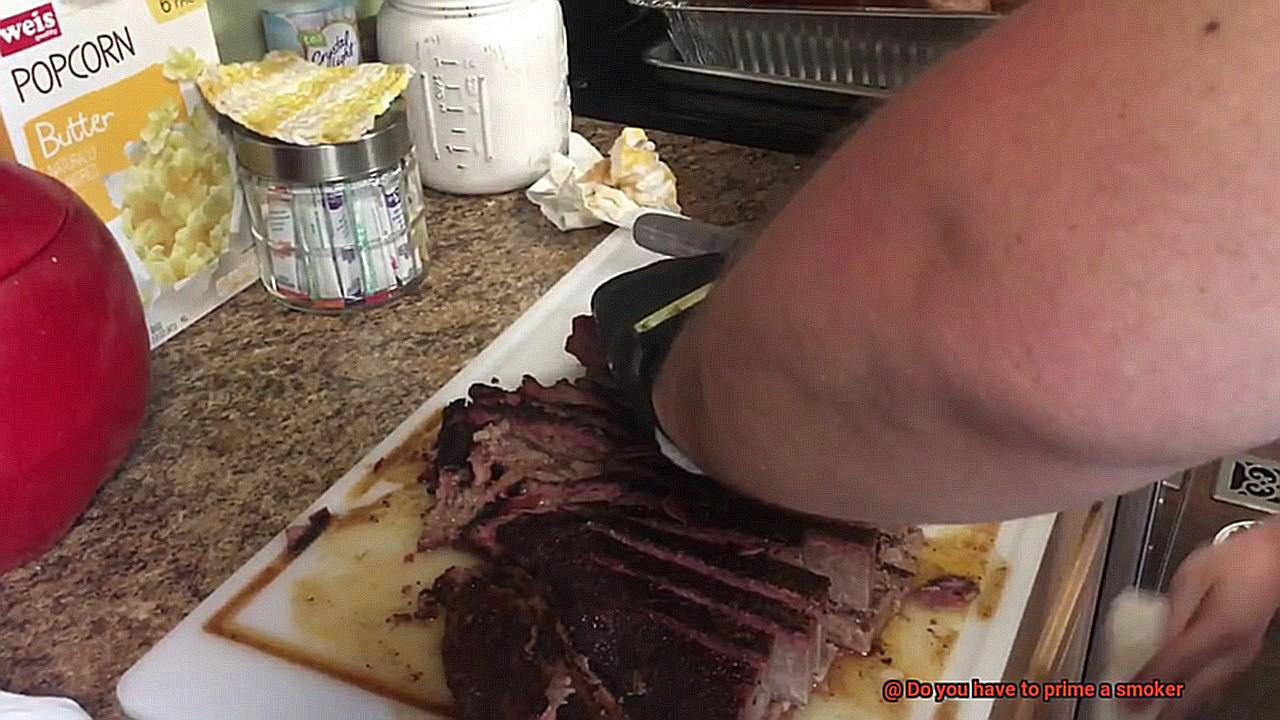
Priming a Charcoal or Wood Smoker
Priming your charcoal or wood smoker is the crucial first step to achieving mouth-watering, perfectly smoked meat. As an expert in this area, I am here to guide you through the process and share some pro tips to ensure your meat is cooked evenly and infused with delicious smoky flavor.
Firstly, it is essential to consider the type of fuel you are using. For charcoal smokers, the best way to get your charcoal hot and ready for cooking is by using a chimney starter. This method ensures that your charcoal burns evenly and reduces the risk of hot spots. On the other hand, wood smokers require split logs or wood chunks instead of charcoal. These produce a unique smoky flavor that can’t be achieved with charcoal.
Once your fuel is ready, it’s time to heat up your smoker. The ideal temperature for smoking meat is between 225-250 degrees Fahrenheit, so make sure to monitor the temperature using a thermometer. Be patient as priming can take anywhere from 30 minutes to an hour depending on the size and type of your smoker. Don’t rush this step – it’s crucial to achieving delicious, evenly cooked meat.
It’s essential to note that the quality of your meat also plays a significant role in achieving perfectly smoked meat. It’s recommended that you choose fresh meat and apply rubs and marinades that complement the smoky flavor.
As you wait for your smoker to reach the desired temperature, take some time to prepare your meat. Rubs and marinades can add flavor and enhance the smoking process. When your smoker is ready, place your meat on the grates and let it cook low and slow.
Remember, patience is key when it comes to smoking meat. Resist the urge to check on your food too frequently – every time you open the smoker, you risk losing valuable heat and smoke. Instead, keep calm, sit back, relax, and let your smoker work its magic.
Priming an Electric or Gas Smoker
Then, it all starts with priming your electric or gas smoker. Priming is a critical step that will help ensure your food is cooked evenly and safely, so let’s dive into the details.
Electric smokers are a popular choice for their ease of use and consistent results. To prime your electric smoker, simply plug in the unit, turn it on to its highest setting, and let it run for around 30 minutes. This allows the heating element to reach maximum temperature and burn off any factory residues or contaminants. Once you’ve completed this step, you can add your wood chips or pellets and get ready to smoke some delicious food.
Gas smokers require a slightly different approach but are equally effective in producing mouth-watering smoked meats. Before turning on the gas, make sure all components are properly connected and in good working order. Then, open the gas valve and light the burner according to the manufacturer’s instructions. After a few minutes, you should be able to smell the gas burning cleanly and see a blue flame, indicating that it’s time to start smoking.
It’s essential to note that some smokers may have additional steps depending on their design or features. For example, electric smokers may require you to fill a water tray or reservoir before priming to help regulate cooking temperature and keep your food moist. Always refer to your smoker’s instruction manual for specific guidelines and safety precautions.
To ensure your smoking experience is enjoyable and safe, here are some additional tips:
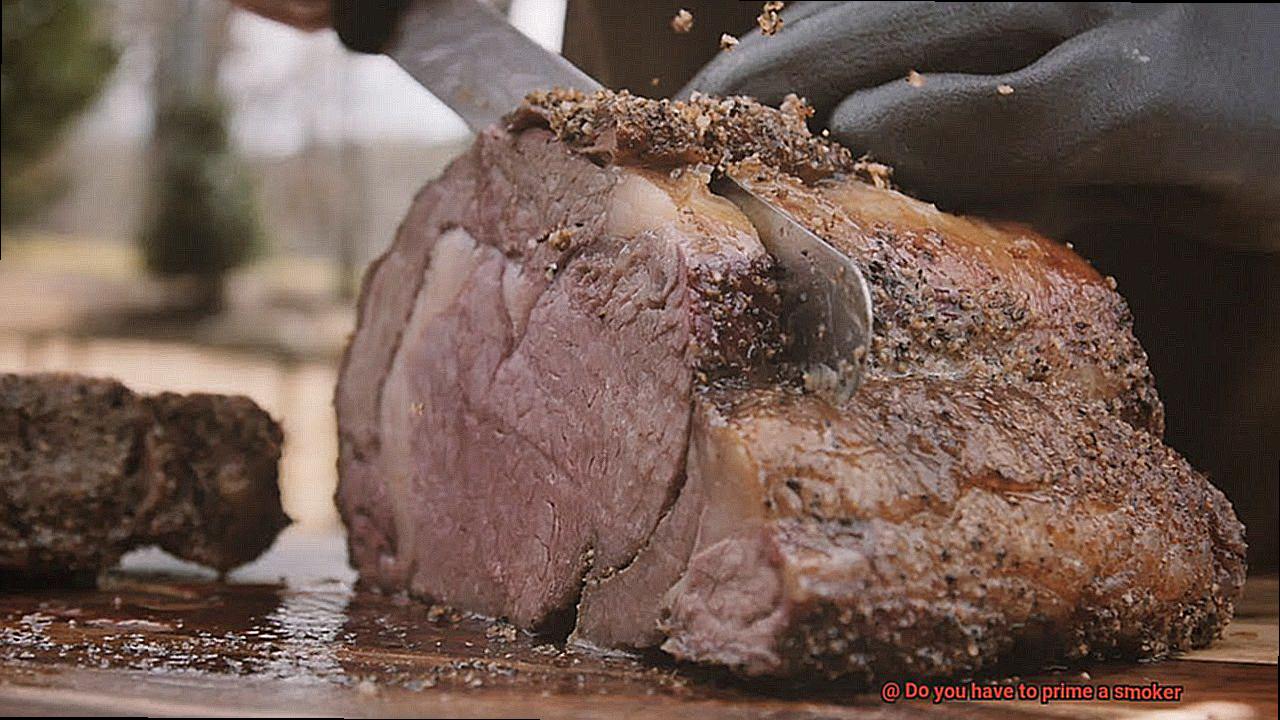
- Always wear protective gloves when handling hot components
- Keep your smoker in a well-ventilated area away from combustible materials
- Clean your smoker regularly to prevent buildup of grease and debris that could lead to fires
Benefits of Priming a Smoker
Priming your smoker is the answer. Priming a smoker refers to the process of heating up the smoker before cooking to guarantee even and safe cooking of food. Although some may argue that priming a smoker is not necessary, there are undeniable benefits to doing so.
Firstly, priming your smoker allows for any excess moisture or debris to burn off. This ensures that your food is free from any unwanted flavors or odors from the smoker itself. Who wants their mouth-watering brisket or ribs to taste like last night’s fish? By priming your smoker, you can ensure that your food is not affected by any unwanted flavors or odors from the smoker.
Moreover, heating up the smoker beforehand ensures that it’s up to temperature and ready to cook your food evenly throughout. This becomes essential when cooking larger cuts of meat that require longer cooking times. You want your meat cooked perfectly, and a warm smoker guarantees even cooking from all angles.
In addition, priming your smoker helps in temperature control. By starting with a warm smoker, you can maintain consistent temperatures throughout the cooking process. This means you won’t have to worry about constantly adjusting heat levels or monitoring the temperature every five minutes. Consistent temperature control guarantees that your meat will be juicy, tender, and flavorful.
But wait, there’s more. Priming your smoker also helps improve overall efficiency. Starting with a warm smoker saves time and energy in the long run since the smoker doesn’t need to work as hard to maintain temperature. This can also help extend the life of your smoker since it will not be working as hard or for as long periods of time.
Tips for Priming a Smoker
To achieve that perfect smoky taste, it’s crucial to prime your smoker properly before cooking. Priming involves heating up your smoker to a specific temperature to burn off manufacturing residues, dust, or debris. Here are five essential steps for priming your smoker:
Clean the Smoker
The first step is to ensure that your smoker is clean and free from any leftover ash or debris. Use a damp cloth to wipe down the interior and remove any excess residue that may affect the temperature and smoke levels.
Choose the Right Fuel
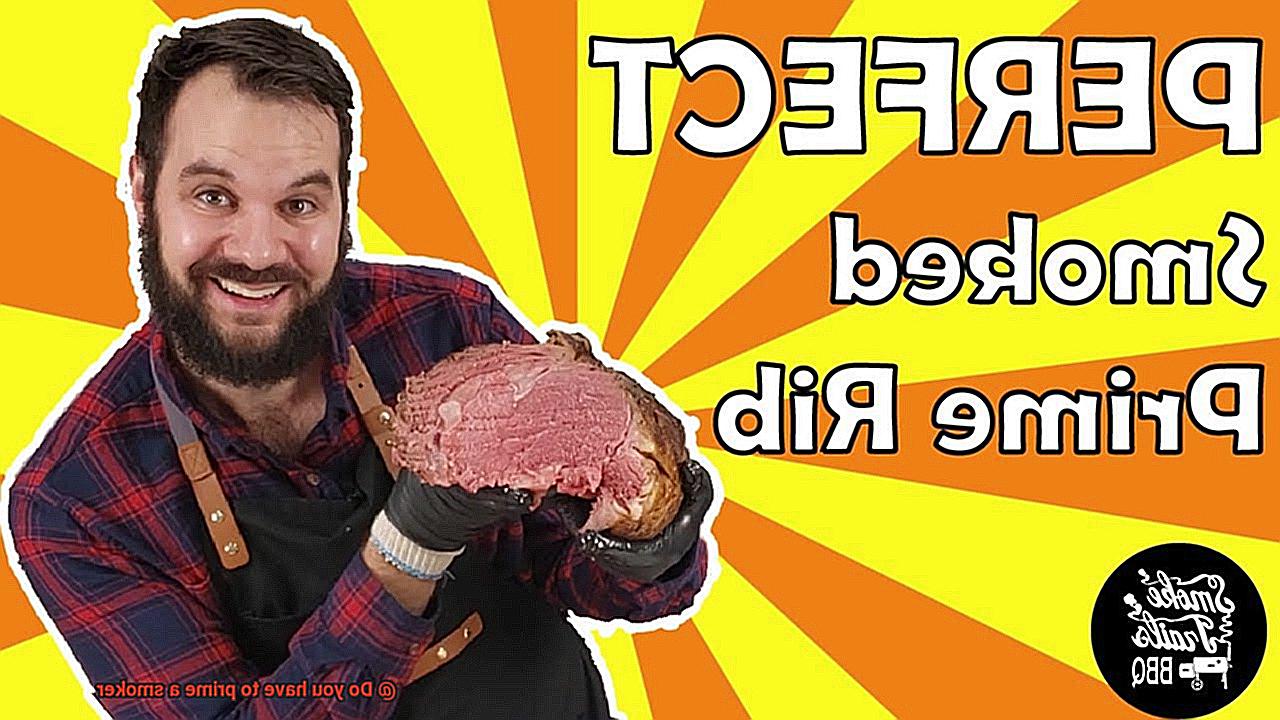
The type of fuel you use can make or break your smoking experience. Charcoal and wood pellets are popular choices for smokers. Make sure you have enough fuel to last the entire cooking process.
Add Water to the Water Pan
Adding water to the water pan will help regulate the temperature and humidity levels inside the smoker. Fill the water pan halfway with hot water to prevent your food from drying out.
Preheat the Smoker
Preheat your smoker to the desired temperature before adding your meat. This will ensure that the smoker is at the proper temperature when you start cooking and that your food cooks evenly.
Monitor the Temperature
It’s essential to monitor the temperature inside the smoker using a thermometer. Adjust the vents on the smoker to control airflow and maintain a consistent temperature.
Cleaning, choosing the right fuel, adding water, preheating, and monitoring the temperature are all crucial steps in priming your smoker for optimal cooking results. Don’t forget that proper ventilation is also essential during this process. It will allow smoke to circulate freely and prevent creosote buildup.
Once you’re done priming your smoker, wipe down the interior with a clean cloth to remove any remaining ash or debris. This step will help ensure that your food is not contaminated with unwanted particles.
Common Mistakes to Avoid When Priming a Smoker
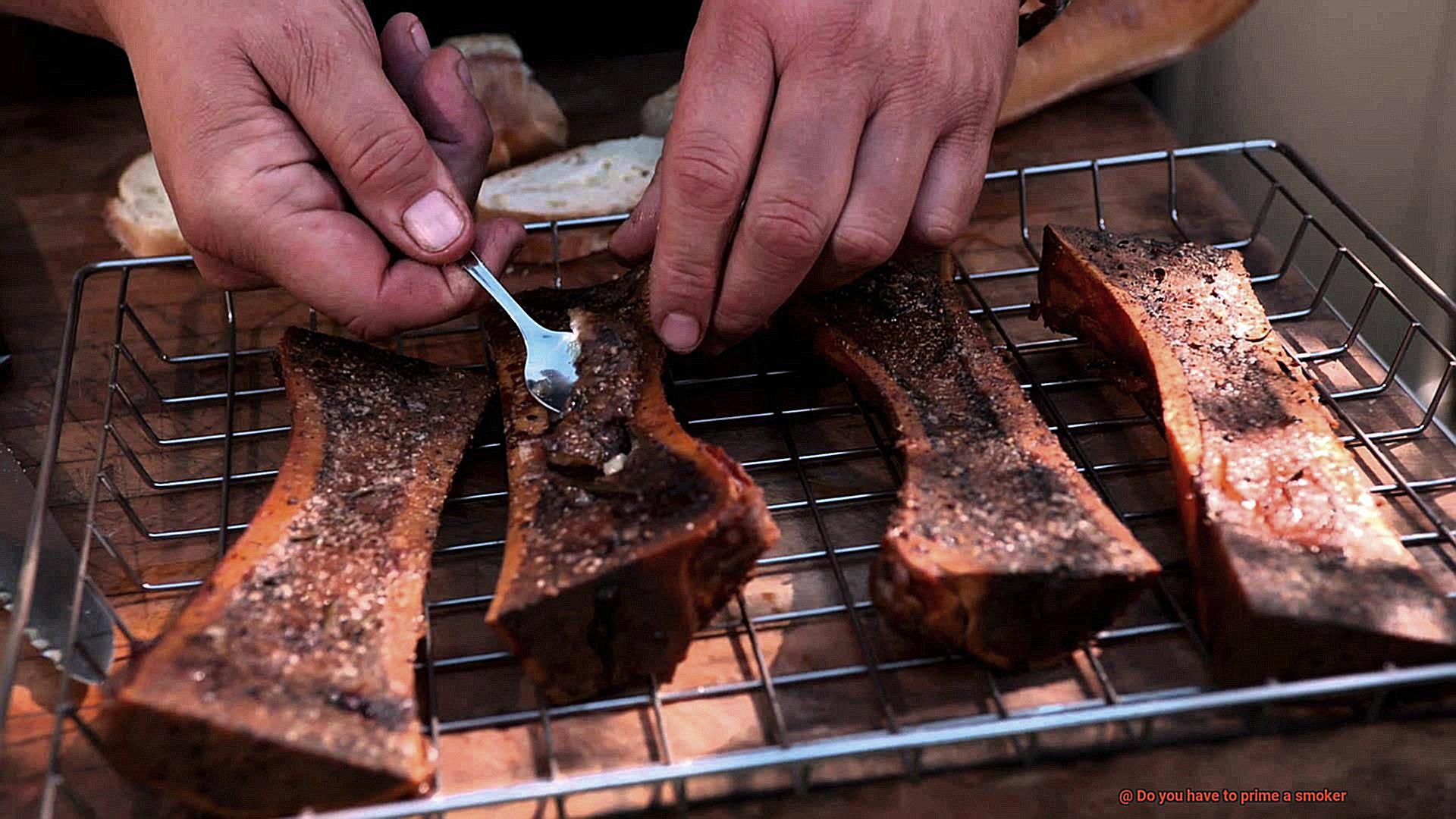
Priming your smoker is a crucial step in ensuring that your meat comes out perfect every time. However, many people make common mistakes when priming their smoker, which can lead to uneven temperatures, longer cooking times, and even dangerous situations. Don’t worry though – with these tips, you’ll be able to avoid these mistakes and become a pro at smoking meat.
Mistake #1: Not Preheating the Smoker
One of the most common mistakes when priming a smoker is not preheating it before adding wood or charcoal. To get consistent results, you need to let your smoker reach the desired temperature before adding any fuel. This will ensure that your smoker is at a consistent temperature and prevent any flare-ups or other issues.
Mistake #2: Not Using Enough Fuel
Another mistake is not using enough fuel. Without enough fuel, your smoker won’t be able to maintain a consistent temperature throughout the cooking process. Be sure to add enough fuel to keep the smoker going for the entire cooking time.
Mistake #3: Using the Wrong Type of Wood or Charcoal
Using the wrong type of wood or charcoal is also a common mistake when priming a smoker. Different types of wood and charcoal burn at different temperatures and for different lengths of time. Make sure to choose the right type of fuel for your smoker and for the type of meat you’re cooking. Oak, hickory, and mesquite are excellent choices for red meat but may overpower poultry and fish.
Mistake #4: Not Properly Cleaning the Smoker
Finally, not properly cleaning the smoker before each use can lead to issues with priming. Buildup from previous cooks can affect the temperature and airflow of the smoker. It’s essential to clean out the smoker before each use to ensure that it’s working correctly. Don’t forget to clean the grates, drip pans, and water pans.
Xm1qgl1breU” >
Conclusion
In the world of smoking meat, priming your smoker is not just a suggestion, it’s a must-do. Whether you’re an experienced pitmaster or a novice, taking the time to prime your smoker will ensure that you achieve optimal internal temperature for producing clean smoke and creating ideal smoking conditions for your meat. Skipping this step could mean sacrificing the taste and texture of your meats.
Priming involves preheating your smoker for an extended period before adding any meat. This process helps to cook off any residual oil or rust and eliminate impurities that could affect the flavor of your food. It’s important to note that factors such as the type of smoker, temperature outside, amount of time the smoker has been sitting unused, and type of wood or fuel used can all affect the need for priming.
Choosing the right fuel, adding water to the water pan, monitoring temperature, and properly cleaning your smoker are all crucial steps in ensuring successful smoking sessions. By avoiding common mistakes such as not preheating or using incorrect fuel types, you’ll be on track to impress friends and family with mouth-watering BBQ dishes every time.
So, don’t skip this essential step – prime your smoker correctly by following our expert tips.

